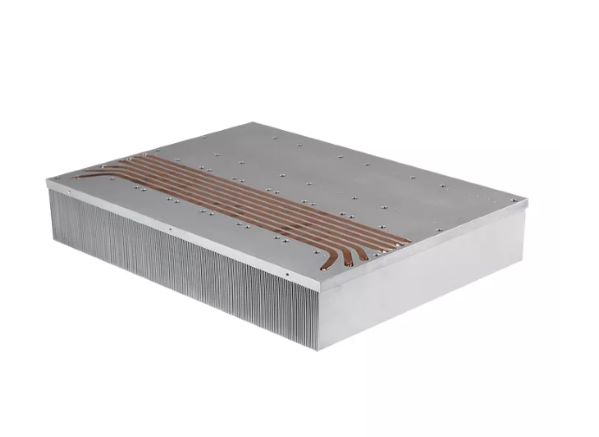58. The importance of inverter cooling, Inverter Thermal Solutions
페이지 정보
작성자 최고관리자 작성일 22-08-25 17:47본문
Why are inverters and converters important?
Alternating current (AC) and direct current (DC) are two types of electricity with different current directions. AC and DC are critical to the operation of electric vehicles but their uses are differently.
Electricity is drawn from the grid in the form of AC power. Most electronic devices and appliances run on AC power, but this form of power cannot be stored. The AC power needs to be converted to DC power to store the electricity from the grid in the onboard EV battery. Once the electricity is stored, it must be converted back to AC to be used efficiently by electric motors and other onboard electronics.
Power inverters and converters are the key components that provide the correct, current format. Power converters are electronic devices that convert AC power to DC power for later use. In contrast, power inverters convert stored power from DC back into AC for immediate use by onboard components once it is drawn from the battery. Both inverters and converters are also used to raise or lower the voltage to the most efficient output.
Inverters and converters can be found in electric vehicle charging stations (converting AC power from the grid to DC power from the vehicle's batteries) or electric or hybrid vehicles (converting drawn power from a home charger from AC to DC, or converting DC power) to AC for use by onboard components). The converter and inverter are often combined in the same unit within the charging system or vehicle charger.
Why is inverter cooling necessary?
Changing the direction of current flow back and forth from AC to DC and constantly adjusting the voltage up and down can create a high heat load within the system. If left unmanaged, this heat can lead to thermal runaway, which can damage the vehicle, battery, and charging station, and can be unsafe for vehicle occupants.
Every component in inverters and converters, from IGBTs, MOSFETs, and other transistors to microcontrollers, generates heat and must be cooled. Because of the high thermal load, inverters often have thermal management systems.
Inverter Thermal Solutions
Inverter thermal management systems typically include custom liquid cooling plates with specially machined flow paths and reinforced fins mounted on the inverters and converters. Die-cast heat sinks are typically used for IGBT cooling and other individual components. A combination of thermal interface materials, such as thermal conductive pads, grease, and caulk, facilitates heat transfer from heat-producing components. These systems are highly customized for each unique converter or inverter cooling application.
Inverter and Converter Applications
While inverters and converters are critical to achieving efficient electric vehicle charging and operation, they are also used in countless other industries involving high currents and voltages. Solar grids, battery energy storage systems (BESS), refrigeration compressors, induction heating, and consumer electronics are typical applications for inverters and converters.
Inverters and converters play a vital role in many industries and products. To ensure that the inverter can generally work for a long time, it is also essential to equip it with an efficient and suitable cooling system. Winshare has a wealth of experience in customizing industrial cooling solutions and an excellent R&D and production team to provide you with the best inverter cooling solution for your product. For more information, please leave a message or contact us directly.
Alternating current (AC) and direct current (DC) are two types of electricity with different current directions. AC and DC are critical to the operation of electric vehicles but their uses are differently.
Electricity is drawn from the grid in the form of AC power. Most electronic devices and appliances run on AC power, but this form of power cannot be stored. The AC power needs to be converted to DC power to store the electricity from the grid in the onboard EV battery. Once the electricity is stored, it must be converted back to AC to be used efficiently by electric motors and other onboard electronics.
Power inverters and converters are the key components that provide the correct, current format. Power converters are electronic devices that convert AC power to DC power for later use. In contrast, power inverters convert stored power from DC back into AC for immediate use by onboard components once it is drawn from the battery. Both inverters and converters are also used to raise or lower the voltage to the most efficient output.
Inverters and converters can be found in electric vehicle charging stations (converting AC power from the grid to DC power from the vehicle's batteries) or electric or hybrid vehicles (converting drawn power from a home charger from AC to DC, or converting DC power) to AC for use by onboard components). The converter and inverter are often combined in the same unit within the charging system or vehicle charger.
Why is inverter cooling necessary?
Changing the direction of current flow back and forth from AC to DC and constantly adjusting the voltage up and down can create a high heat load within the system. If left unmanaged, this heat can lead to thermal runaway, which can damage the vehicle, battery, and charging station, and can be unsafe for vehicle occupants.
Every component in inverters and converters, from IGBTs, MOSFETs, and other transistors to microcontrollers, generates heat and must be cooled. Because of the high thermal load, inverters often have thermal management systems.
Inverter Thermal Solutions
Inverter thermal management systems typically include custom liquid cooling plates with specially machined flow paths and reinforced fins mounted on the inverters and converters. Die-cast heat sinks are typically used for IGBT cooling and other individual components. A combination of thermal interface materials, such as thermal conductive pads, grease, and caulk, facilitates heat transfer from heat-producing components. These systems are highly customized for each unique converter or inverter cooling application.
Inverter and Converter Applications
While inverters and converters are critical to achieving efficient electric vehicle charging and operation, they are also used in countless other industries involving high currents and voltages. Solar grids, battery energy storage systems (BESS), refrigeration compressors, induction heating, and consumer electronics are typical applications for inverters and converters.
Inverters and converters play a vital role in many industries and products. To ensure that the inverter can generally work for a long time, it is also essential to equip it with an efficient and suitable cooling system. Winshare has a wealth of experience in customizing industrial cooling solutions and an excellent R&D and production team to provide you with the best inverter cooling solution for your product. For more information, please leave a message or contact us directly.




